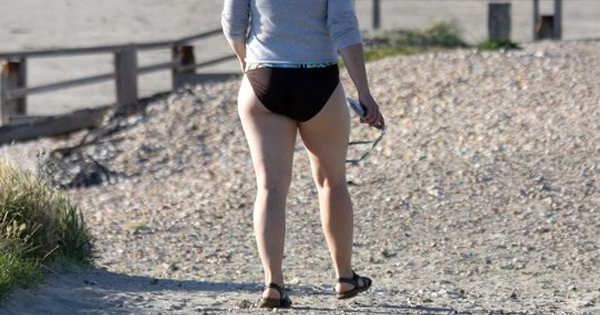Advertisement
Unless you’re one of those lucky women with naturally perfect legs (i.e.: supermodels), chances are, you feel like you’re constantly fighting to burn fat from your butt and thighs.
It’s a hard pill to swallow, but even celebrity trainer Holly Perkins calls every woman’s hips and thighs “the final frontier.”
But how is this even possible? Every single exercise you’ve tried uses your legs—it’s virtually impossible to do cardio without moving your legs!
Still, when you begin a new diet and fitness routine, your butt, hips, thighs, and pooch are almost always the last areas you see results.
The real reason—homeostasis. Weight-loss plateaus inevitably hit, no matter how hard you work out at the gym, because our bodies were designed that way to help us survive.
According to Deborah Clegg, a metabolism investigator at the University of Texas Southwestern Medical Center, women tend to hold fat around their hips and thighs because, at one point, we truly needed it.
From an evolutionary perspective, that particular fat was stored to provide women with enough calories for breastfeeding or to help sustain a healthy pregnancy during a potential famine.
The problem is—most women today aren’t exactly keen on holding onto any extra calories, especially around the hips and thighs.
So, our trouble zones exist because they used to help us. But what about now? While we don’t necessarily need to hang onto this extra fat any longer, our bodies haven’t exactly received the memo yet.
Since our bodies were designed to adapt to drastic changes over time, it seems that the only way to lose the extra baggage is to keep changing before your body catches up.
That’s why interval training is so important to overall weight loss. By constantly using different muscles at different weights and speeds, your body has to burn fat to keep up with you.
You may not be able you spot-reduce your trouble zones away, but increasing your metabolic rate and building lean muscle all over will eventually help you shed fat from even your most problematic areas.
What do you think the best way is to fight your trouble zones? Tell us in the comments!
Photo Copyright © 2011 Gareth Williams/Flickr




